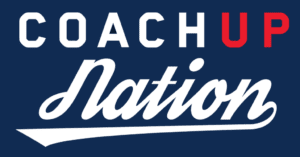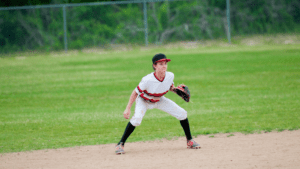Court Position in Baseline Play
For most people, tennis means getting out in the summer and hitting groundstrokes. Just heading out and hitting is fun for people and quite addictive. Some coaches write that since serves and returns occur on every point, they are more important. But in a typical tennis match, if 150 points are played in a singles match, each player might serve 75 points. That might mean taking 75 first serves, 30 second serves, 75 returns and another 250-300 groundstrokes for each player. That is, you are typically hitting three times as many groundstrokes as first and second serves combined.
That means your forehand or backhand will probably decide most points. And that’s why we practice them: to play matches and to rally with friends in social tennis. However, not all groundstrokes are created equal. One of the most important concepts is court position.
Think of baseline play as involving three situations: defensive, neutral and aggressive. Rarely will you hit winners, but more likely you will rely on your opponents errors and forcing your opponent to make errors.
Neutral rallies occur usually when you are 2-3 feet behind the baseline. Typically you add topspin and try to hit for reasonable depth and height. Typically you aim 3-4 feet above the net and several feet behind the baseline. You might think of hitting crosscourts or down-the-lines. You might have an ideal stroke that is waist-high, with a C-swing and follows through above the shoulder.
Defensive shots occur when you are on the run, maybe 7-15 feet behind the baseline or wide of the sidelines. In these situations, aiming higher and hitting more spin is critical. You need to gain time and therefore aiming 3-4 feet above the net can be a mistake, so you need to aim 4-5 feet or even higher. Lobs, moon balls and loops (heavy topspin high balls0 are useful to gain time to recover back into the court. A mistake some players use is exclusively crosscourt. You should also hit through the middle or even down-the-line if to a weaker side (e.g, opponent’s backhand). Hitting through the middle is useful if you can keep it deep and high as it is hard to play offense from deep in the middle. Your opponent can’t easily angle the ball to the sides.
Aggressive play is what everyone would like to do. This occurs when you step inside the baseline. It requires more alertness as many players don’t react quick enough to take the ball early. The advantage is you can take away time from your opponent, you can hit for more angles and use the court better. You can set up an approach shot or even a drop shot. The aggressive swing can be often shoulder-high so your entire swing might be on a higher plane than a neutral ball. It requires quick thinking on the feet. Many players hit much harder, but that means more mistakes. So you really want to learn how to manage your opportunities on the short or high balls. The best way to be aggressive inside the baseline is step in and take the ball near shoulder height. You can hit flatter and marginally harder since you already take a good amount of time away from your opponent. When you step inside, make your opponent’s weakness your primary target. If the backhand is weak, drive to it. Put the backhand under pressure. The alternative is hit slightly wider with more angle to the strength and push the opponent off the court which sets up an easier shot (such as an approach shot) to the weaker side.
That means you need to practice three court positions at the baseline.
Here are some drills and games to help your baseline play and court position:
1. Practice playing every ball inside the baseline.
2. Practice starting a rally at the sideline/baseline and hitting higher and recovering back into position. Few players ever do this drill.
3. Practice moving slightly back and forth on groundstrokes, not just laterally. You will find the balls slightly different and develop better technique and tactics.
4. Practice running around your weakness. Have your friend hit a slightly high, easy ball to your backhand and run around to hit the forehand. It’s a cooperate drill and is best to start with the easy ball to the backhand and rally it out.
5. Practice crosscourt rallies.
6. A good game, I call it 13, where you start a rally crosscourt and then either player can go down-the-line. A point ending off a crosscourt is worth 1 point but a point ending off a down-the-line is worth 3 points. Be careful! A missed down-the-line is worth 3 to your opponent! In this game, you develop the understanding of risks. You can also do 12, where the down-the-line is worth 2 points.
7. Practice the ad court rally: topspin backhand, slice backhand (one-handed), inside-out forehand. There is more variety in the ad court than the deuce court which is primarily topspin forehand.
Good luck!
How useful was this post?
Click on a star to rate it!
Average rating 0 / 5. Vote count: 0
No votes so far! Be the first to rate this post.



